Today I finished up the installation and filmed and recorded everything.
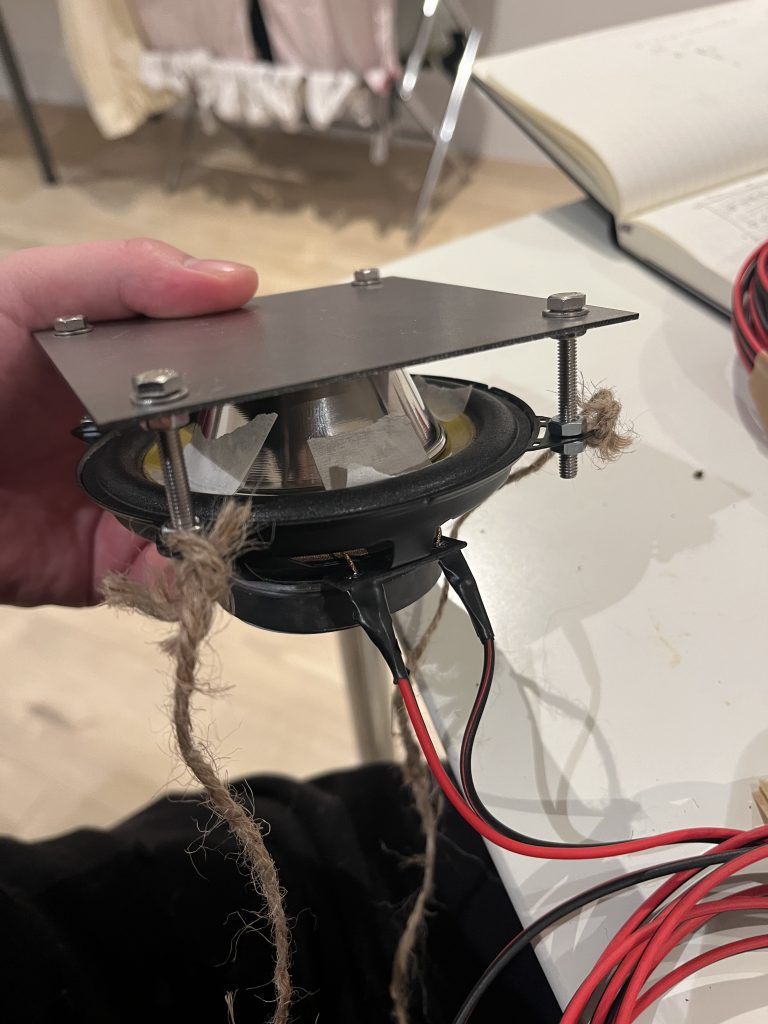
I started by connecting the copper wire and thread to the speakers, which I had already set up and ready to hang. After that, I got ready to attach the battery and Arduino to the ceiling. Initially, I was going to attach them to one large plate and attach them all at once, but the batteries were quite heavy, so the plate and tape wouldn’t hold up, so I started with the Arduino and attached it to the ceiling, then attached the batteries around it. The tape didn’t hold up as well as I thought it would, so I had to apply several layers of tape, but I was able to successfully attach them all to the ceiling. Next, I hung the speakers in close sequence and in the positions I had previously marked. It was difficult to balance the speakers, but once I got used to adjusting the length of the thread, it was easy.
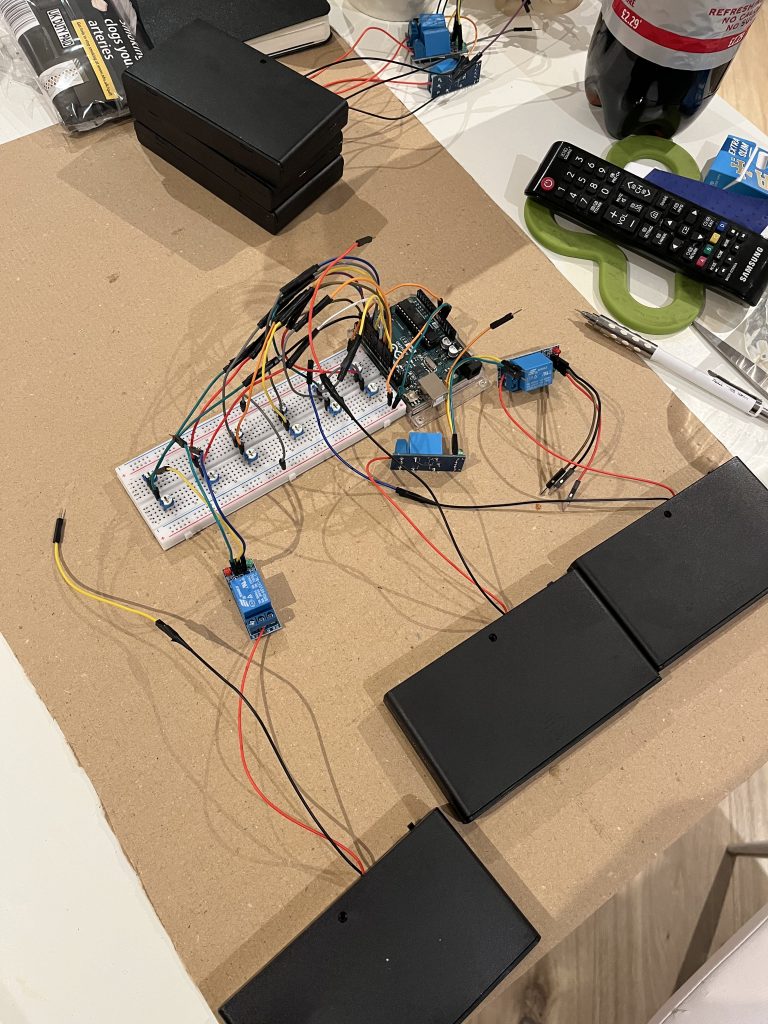
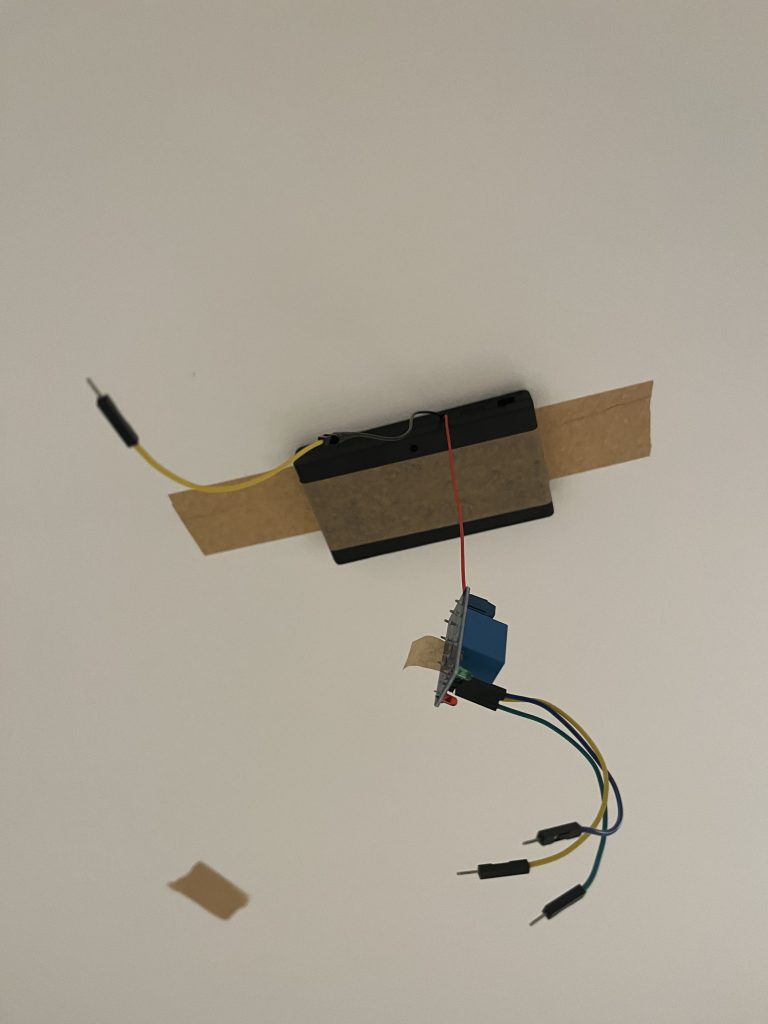
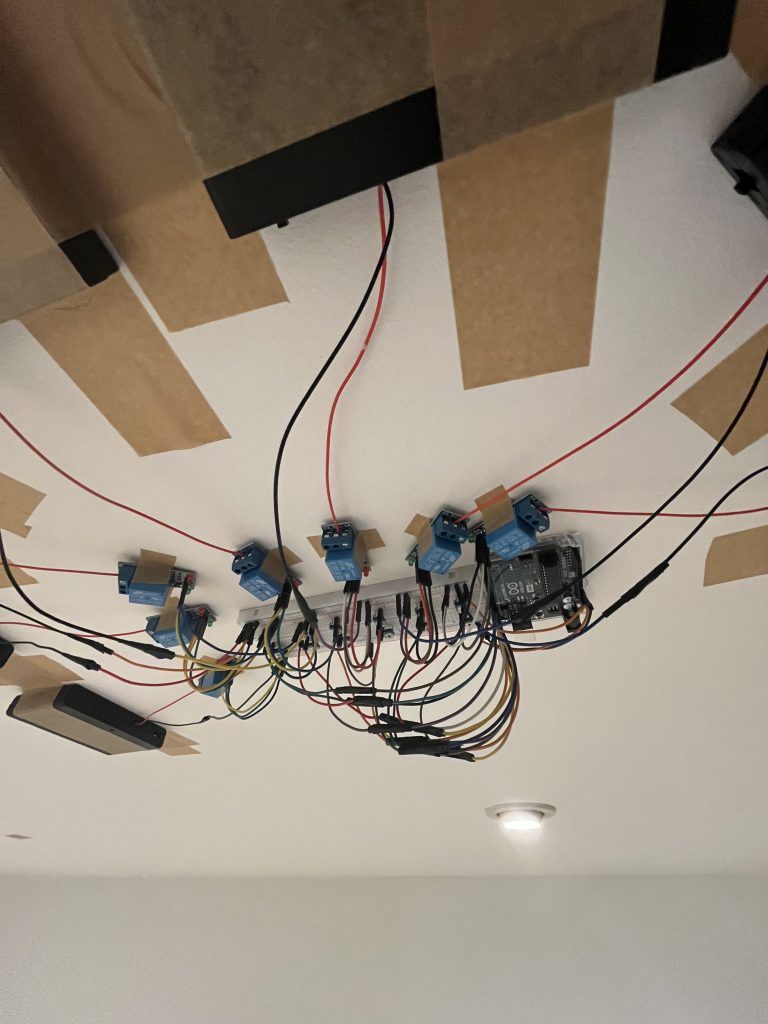
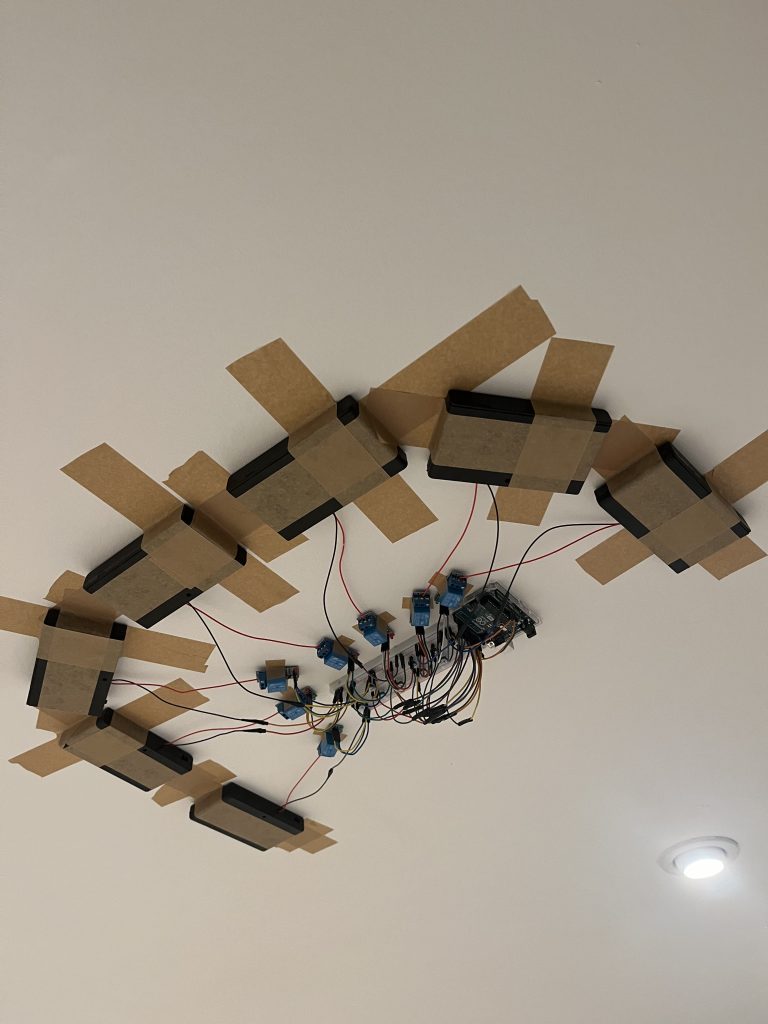
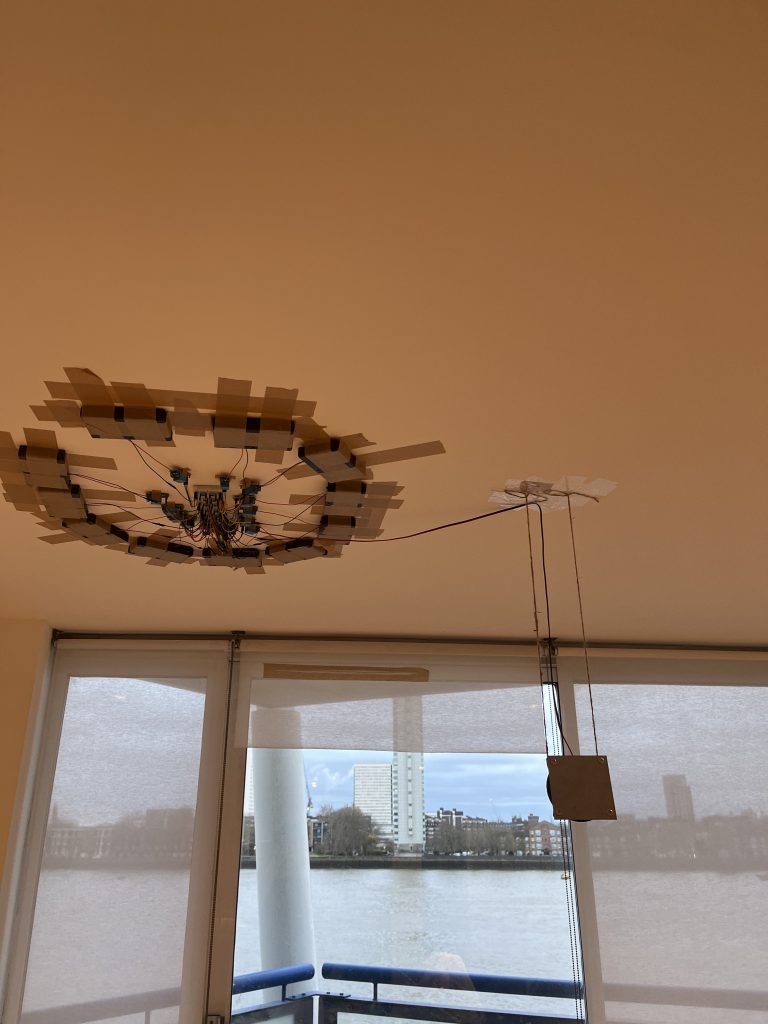
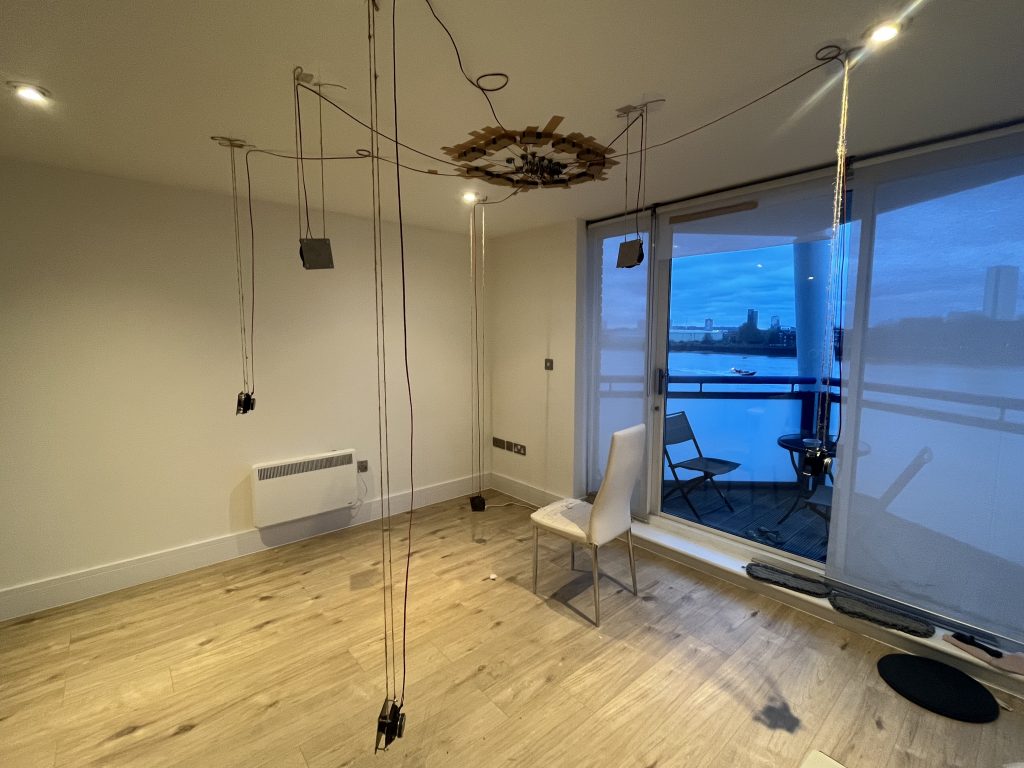
With all the speakers, Arduino, and batteries attached to the ceiling, I turned off the lights and tested the lights and camera. The room was white, which made it difficult to control the light, but I managed to get the look I wanted by running the lights at very low power. It would have been better if the room itself was all black, but I was trying to get the best out of the environment I could. After that, I shot some short cutscenes, moving the camera and lights around, and then I was ready to get into position for the full shot.
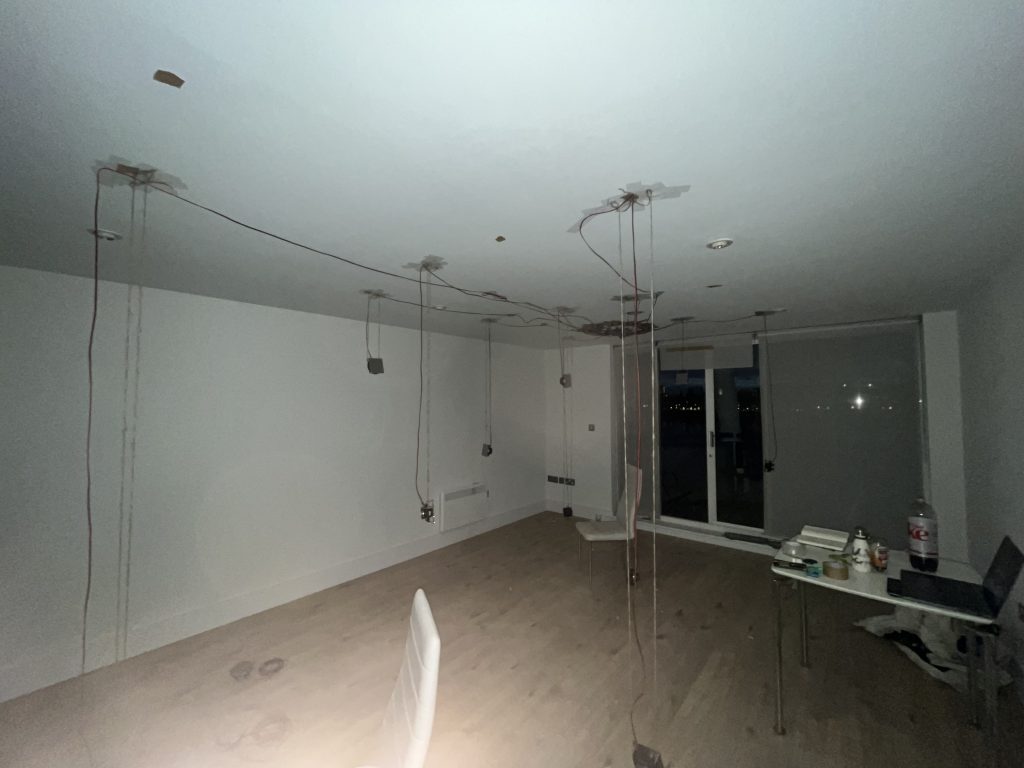
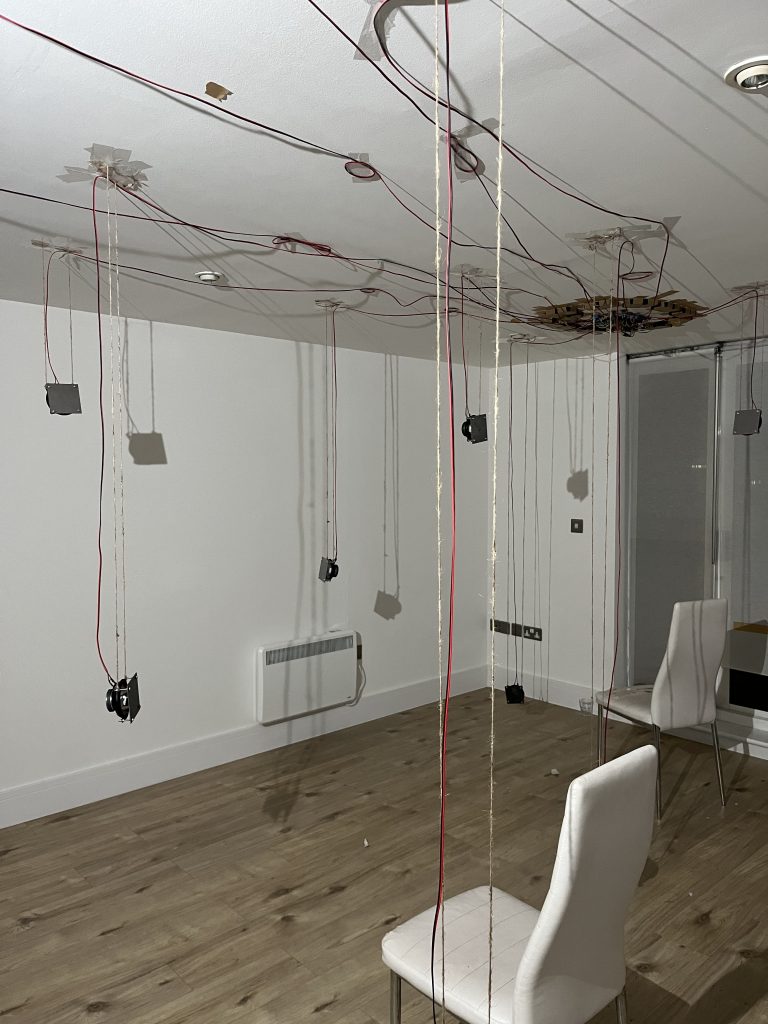
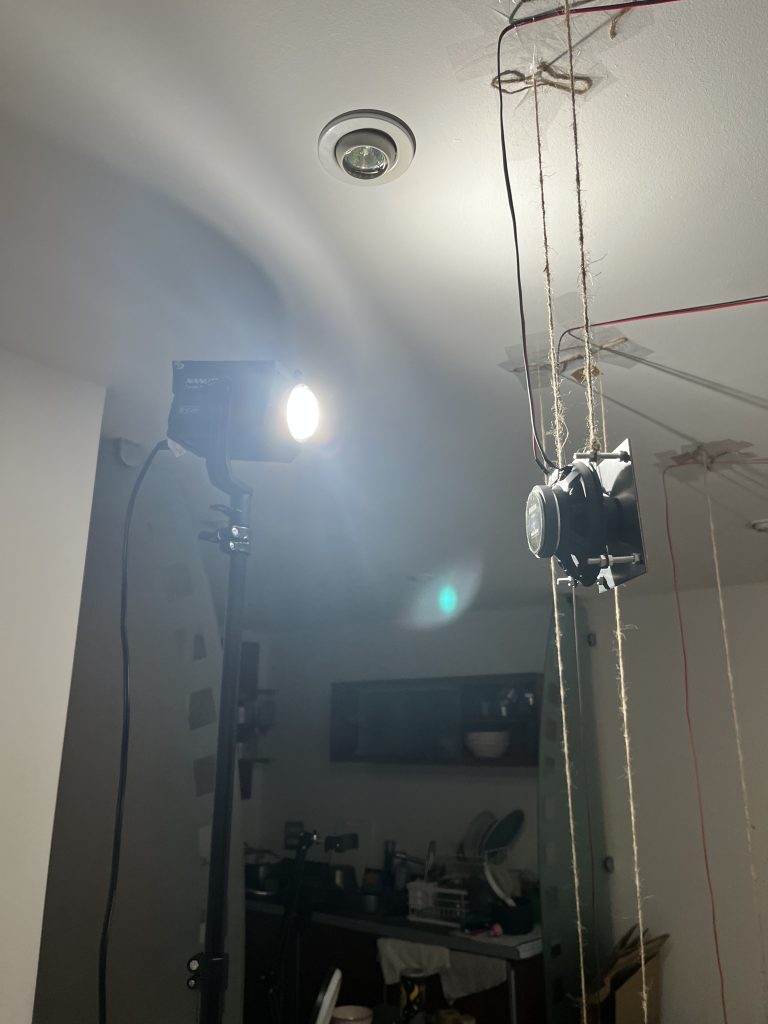
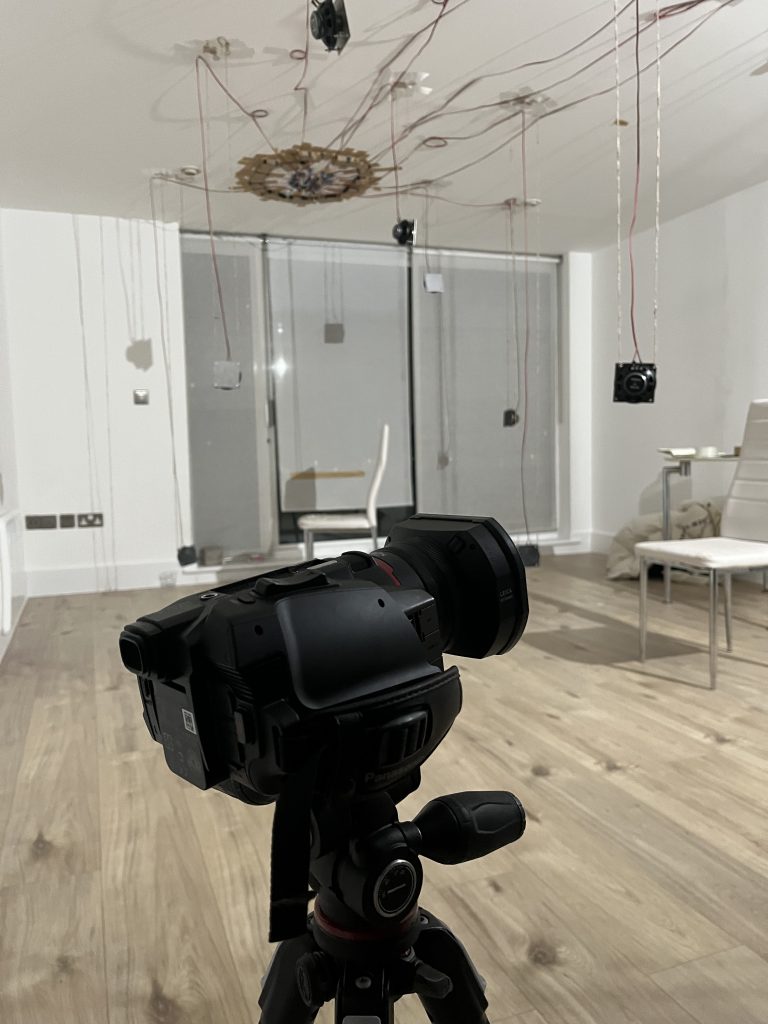
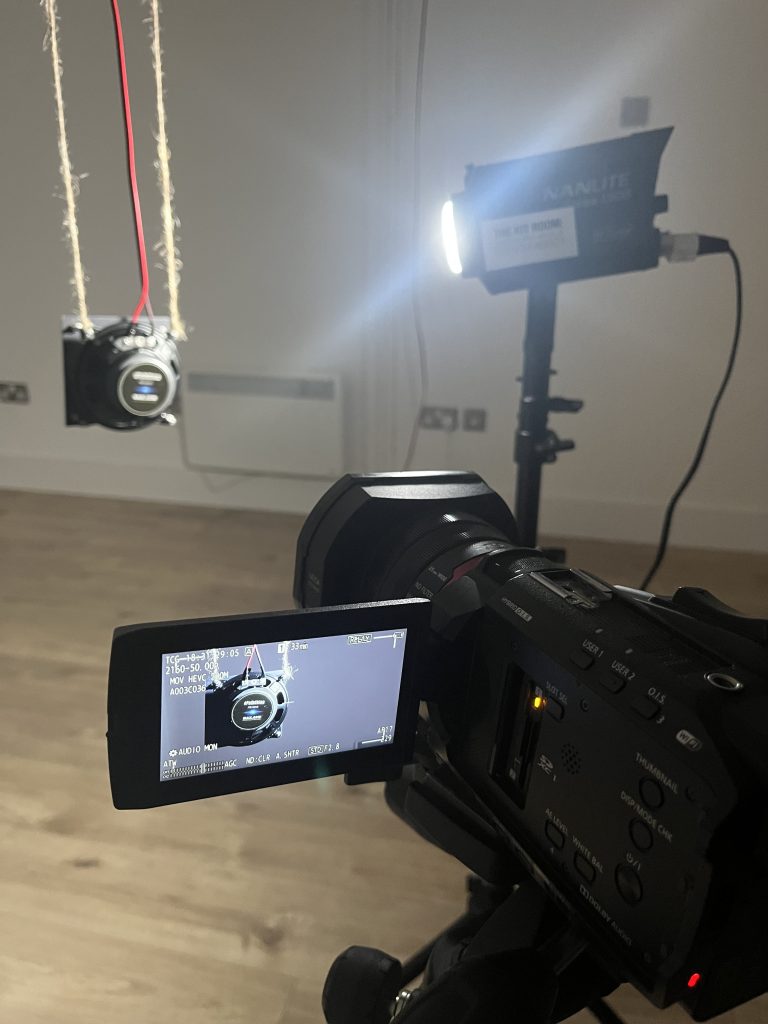
Since I was limited by battery, I had to act quickly and in a set order, so I simulated in my head the sequence of switching on the recorder and filming equipment, etc. The first time I tried it, it didn’t work because Max/MSP suddenly couldn’t find the port to signal the Arduino, but after disconnecting and reconnecting the wires, it worked fine.
I recorded with two zoomH5s, one in the centre of the room to capture the overall sound, and a zoomH4 connected to a condenser microphone to capture the sound in the direction I wanted. I carried the zoomH4 around during the shoot to capture the sound, and when I was editing the film, I planned to add the amplified sound to the film during cutscenes. However, the SD card in the zoomH4 that I was recording on was not recognised by my computer, and I had to edit and submit the film right away, so it was a shame I couldn’t use it. Anyway, I finished the film and edited it with Imovie, which is built into MacOS.
This concludes this project. I had a lot of failures, but I learnt a lot in the process of overcoming them. I think I will be able to do better next time if I have a project that uses electric circuits, and I will be able to fix the things that I didn’t solve properly this time.